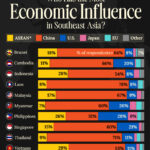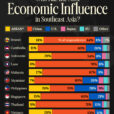
According to the headline TIC statistics, foreign central banks have in the past six months sold the fewest UST’s since the 6-month period ended November 2015. That may indicate an easing of “dollar” pressure in the private markets due to “reflation” sentiment. They are, however, still selling. In February 2017, the latest month available, the foreign official sector disposed of another $10.7 billion (net) after -$44.9 billion in January. The difference this year versus last year is that in 2016 the incidences of heavy “selling” were relentless whereas in 2017 it has been irregular.


Including the private sector, overall there is the opposite indicated, though the negative 6-month total is due primarily to the “dollar” warning (broad “selling”) in September 2016. The aggregate net total in February remained negative including both private as well as official activity, suggesting that marginal changes in systemic availability are small and of the same general circumstances rather than representing a wholesale inflection (to rising capacity).

There does seem to be a different pattern emerging in bank liabilities, though in its third quarter of such a state the implications are unclear (as are the motivations). The month of February, which had been as a middle month each quarter one for subtraction, was positive again for the second straight. That may be “reflation”, too, as the middle month of those last two quarters have hinted at behavior perhaps like the period before the “rising dollar.”


It is impossible to say for sure based on the middle month alone, as it is the ending month every quarter that determines the overall “dollar” measurement or at least our imperfect inference of capacity in bank liabilities.
As discussed earlier, the primary focus for “dollars” in total continues to be Asia, meaning Japan. The TIC breakdown for that country continued to support the direction of the rising rather than falling yen. The Bank of Japan either together with or in parallel to Japanese banks dispose of UST assets seemingly to keep the yen lower against the dollar (going back to the end of 2014, which in Japanese terms has been a “falling dollar”), meaning that in the world of FX they are being forced to accommodate at some great expense of “dollar” resources in order for the yen to continue on in, or just near, the “right” direction. As the yen rises, as it did throughout much of 2016, Japanese dollar assets rise with it (path of least resistance?).















